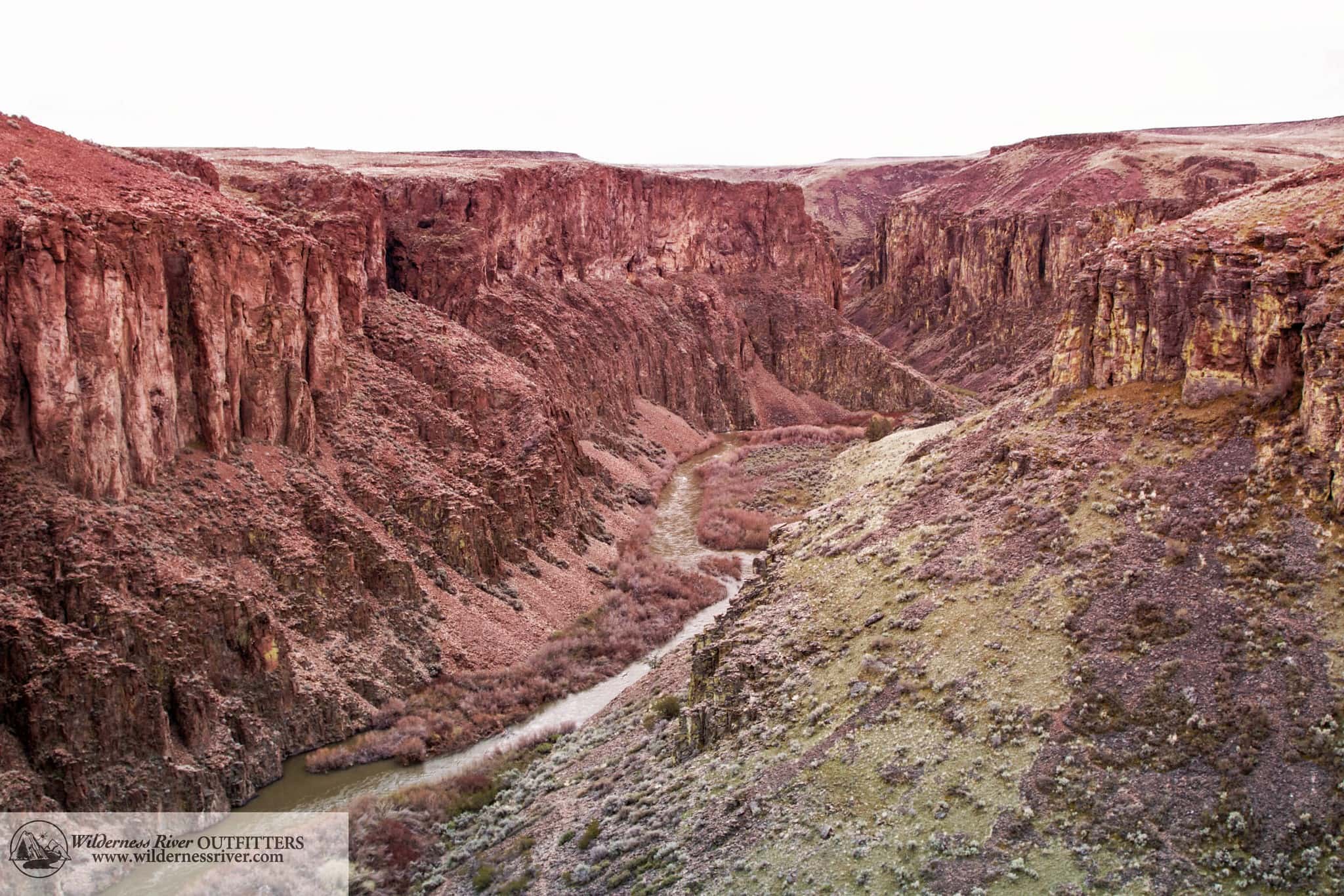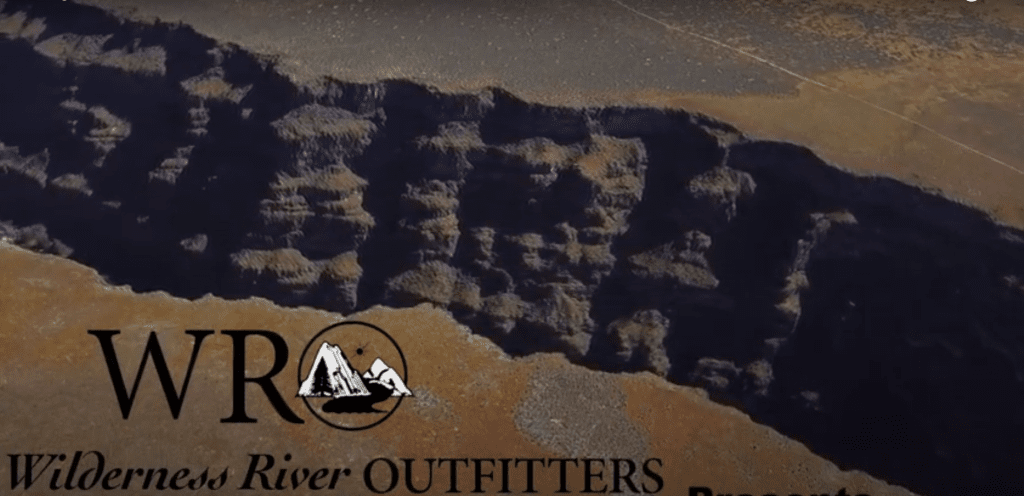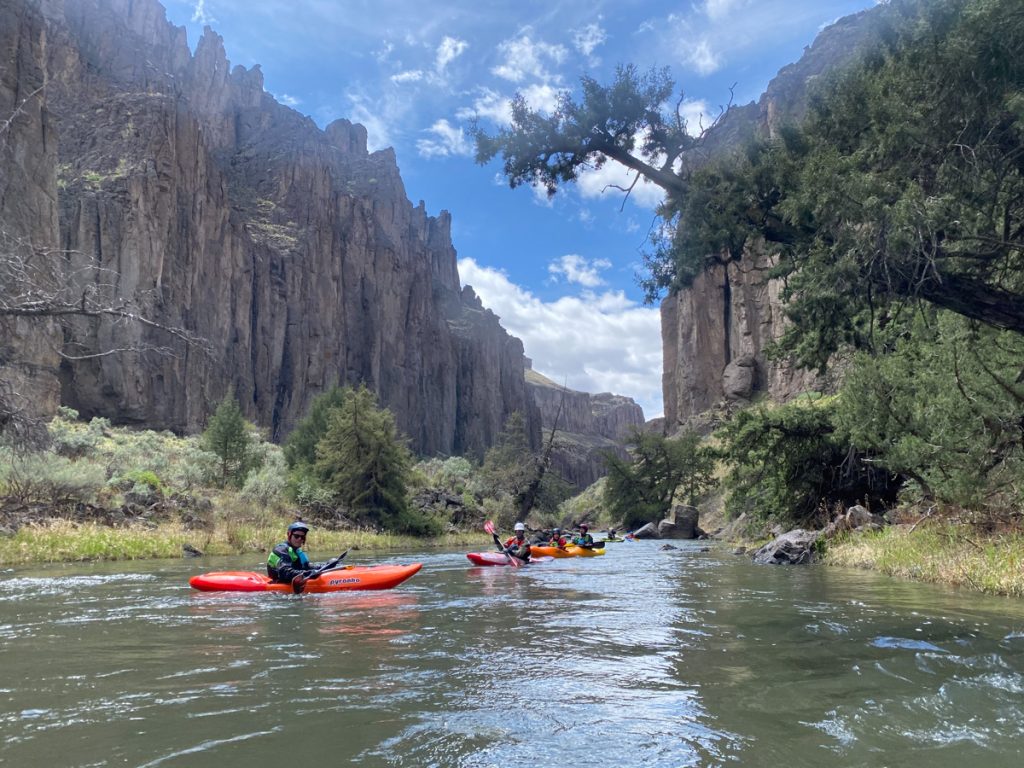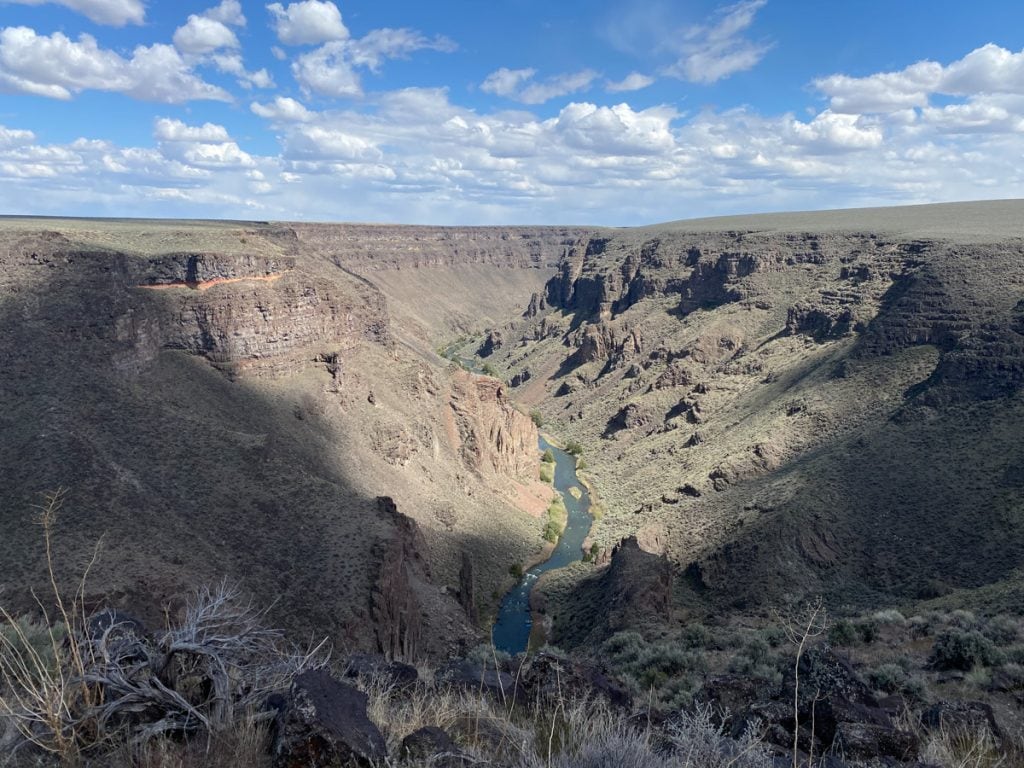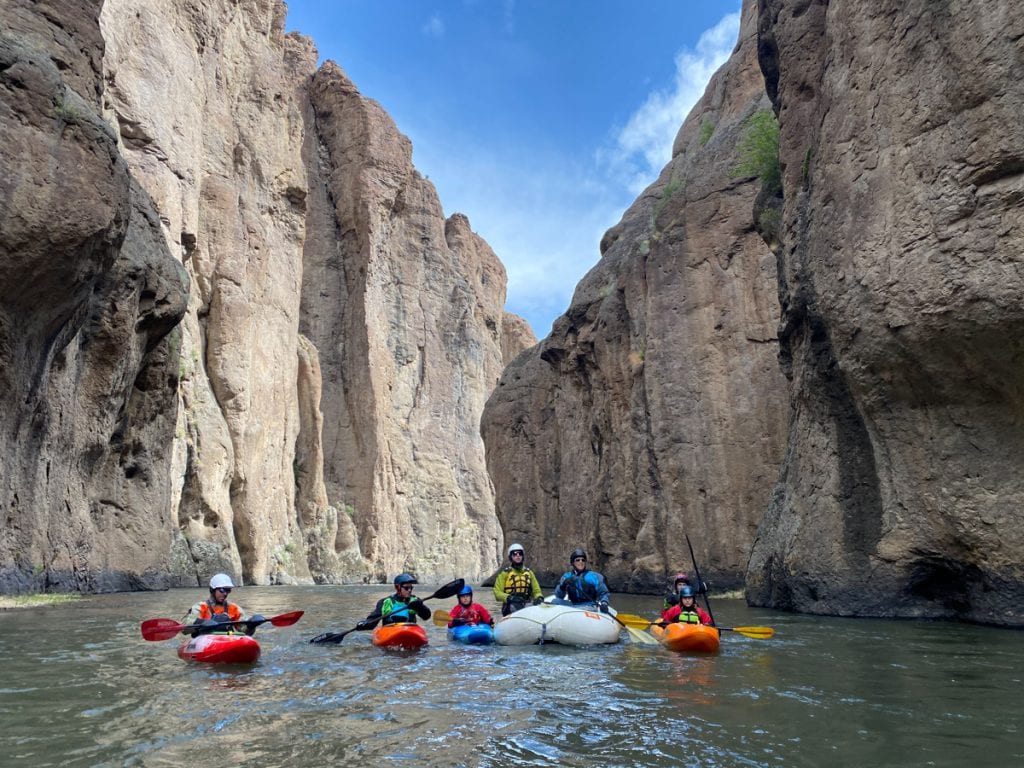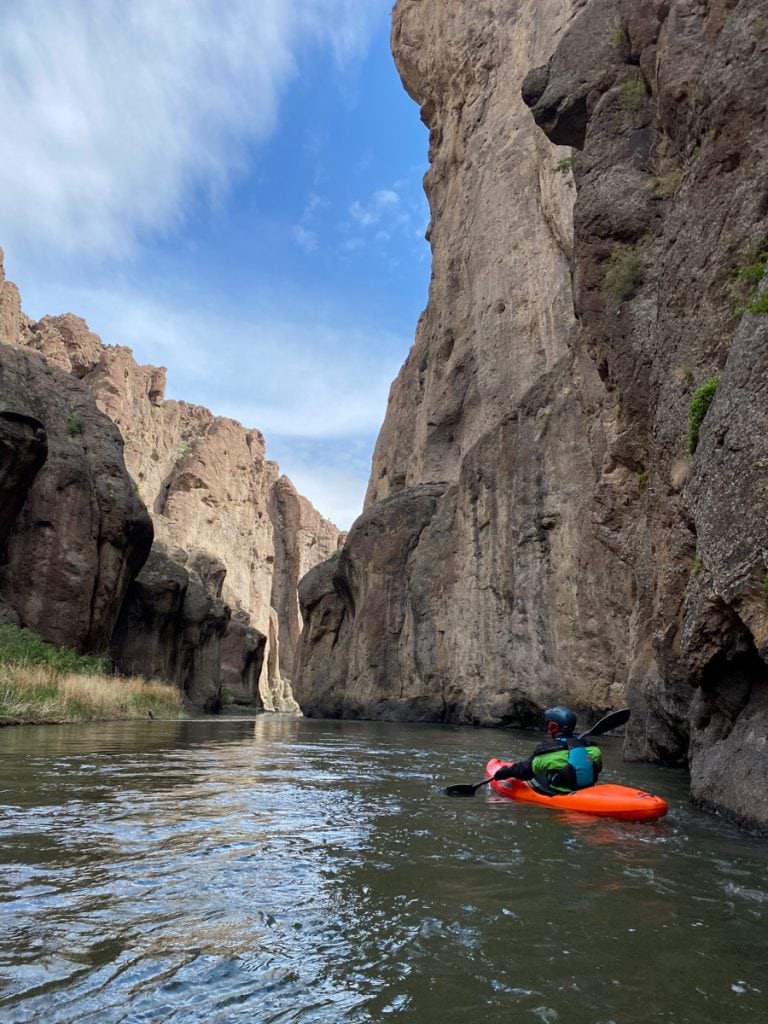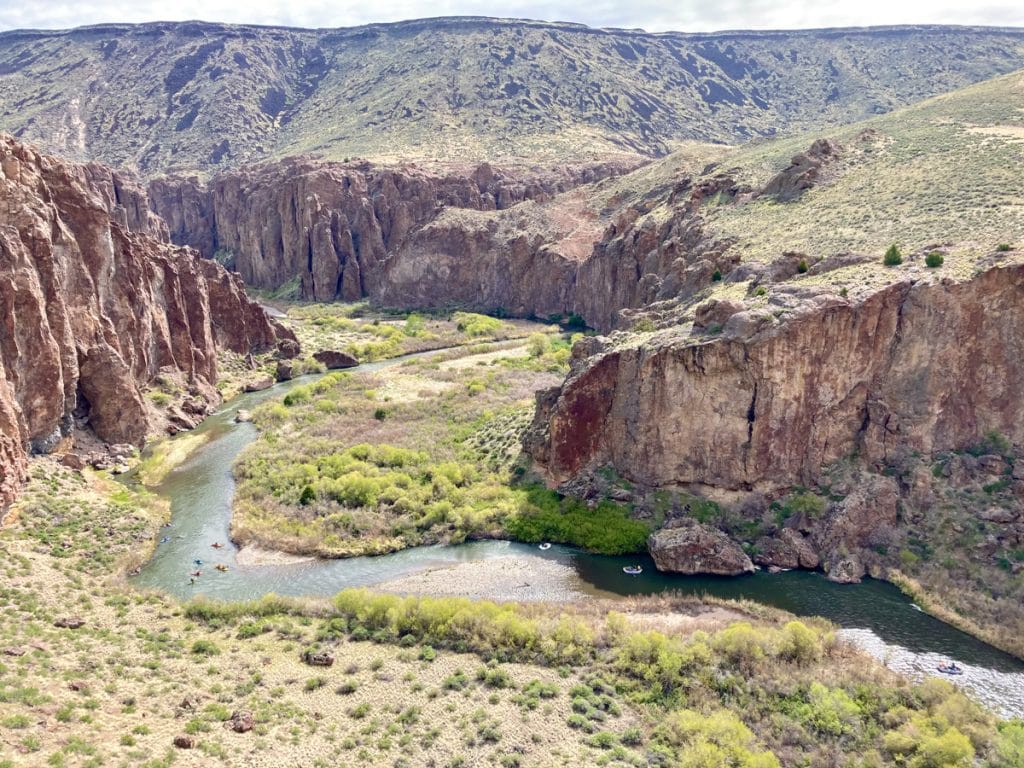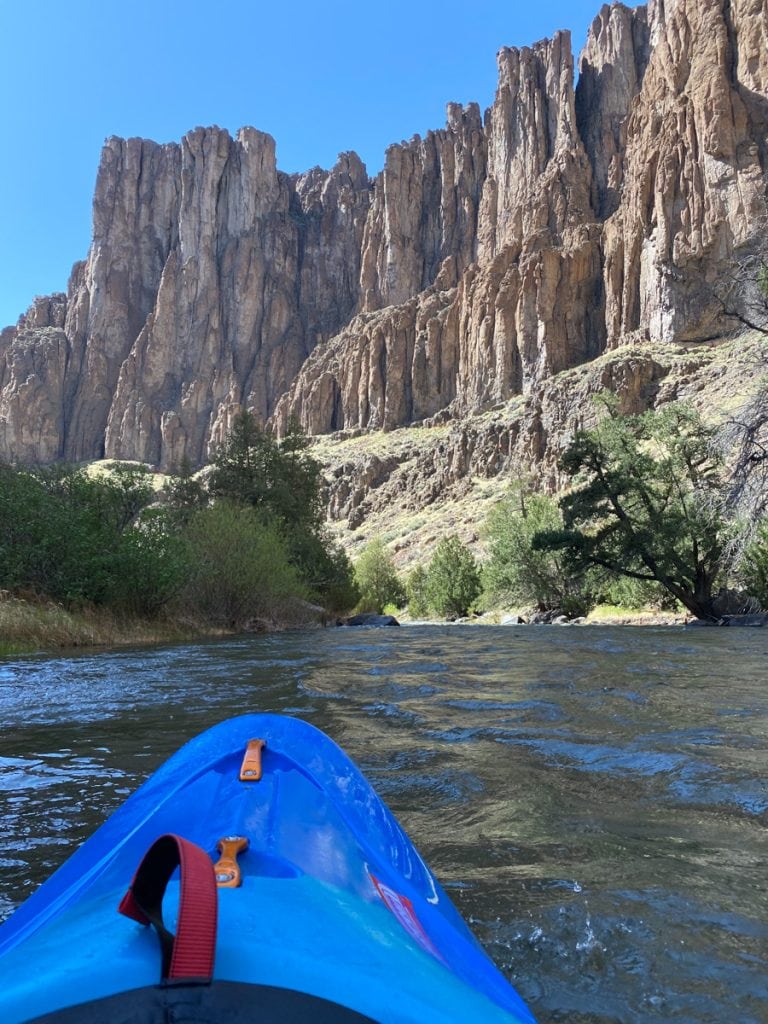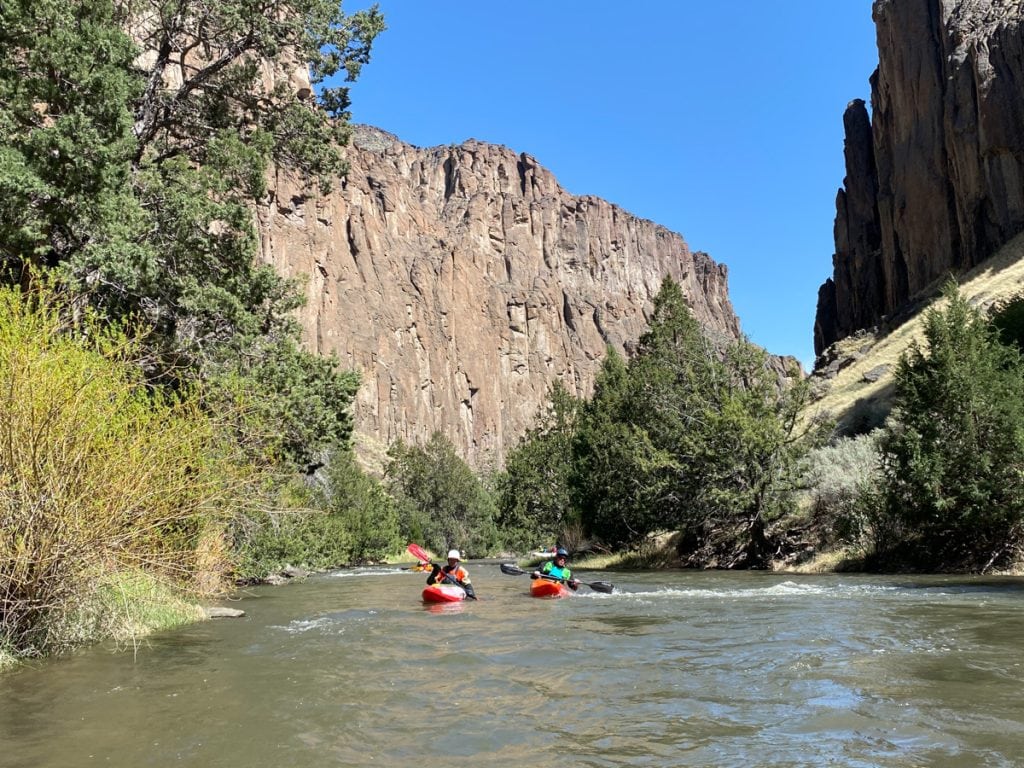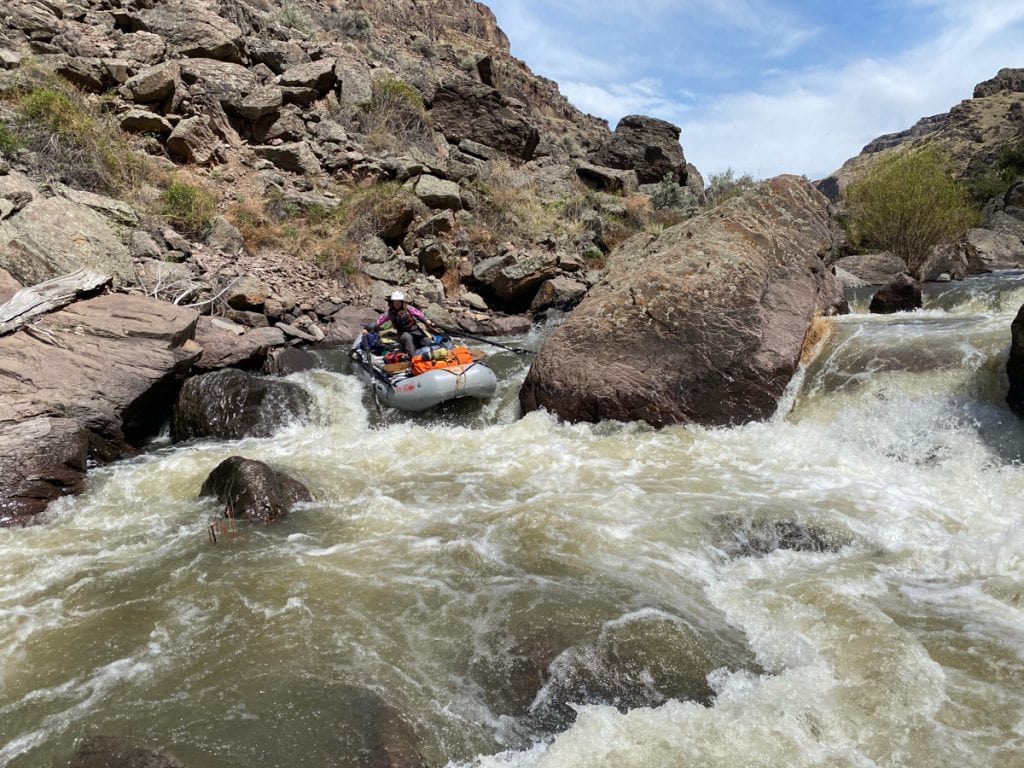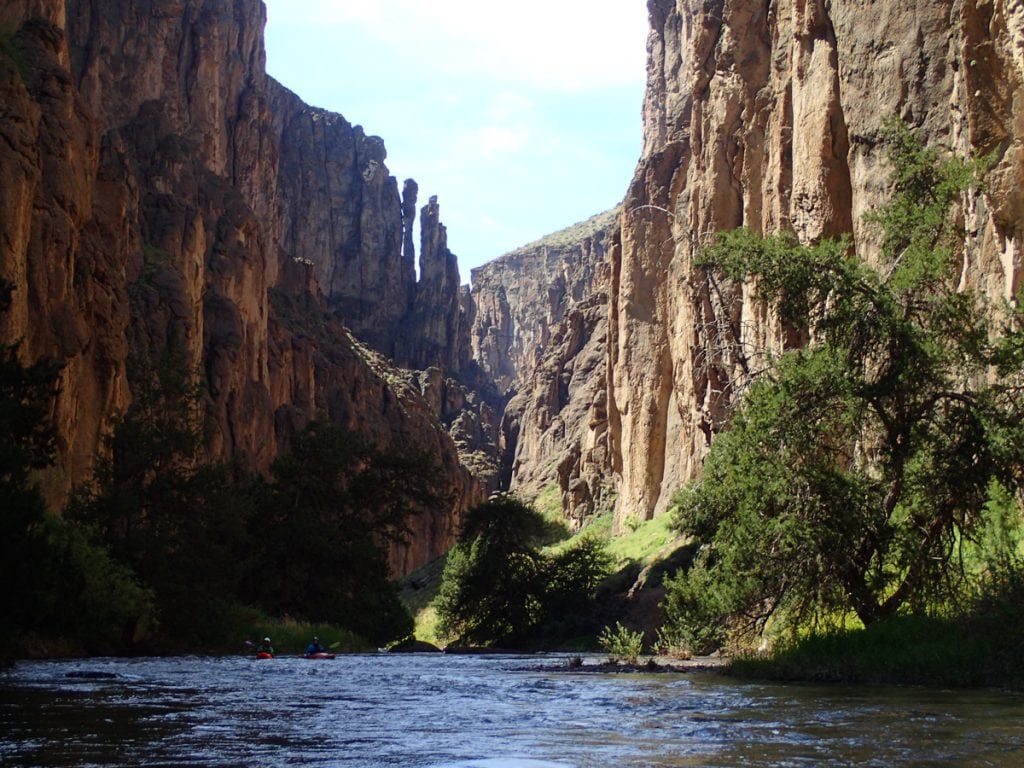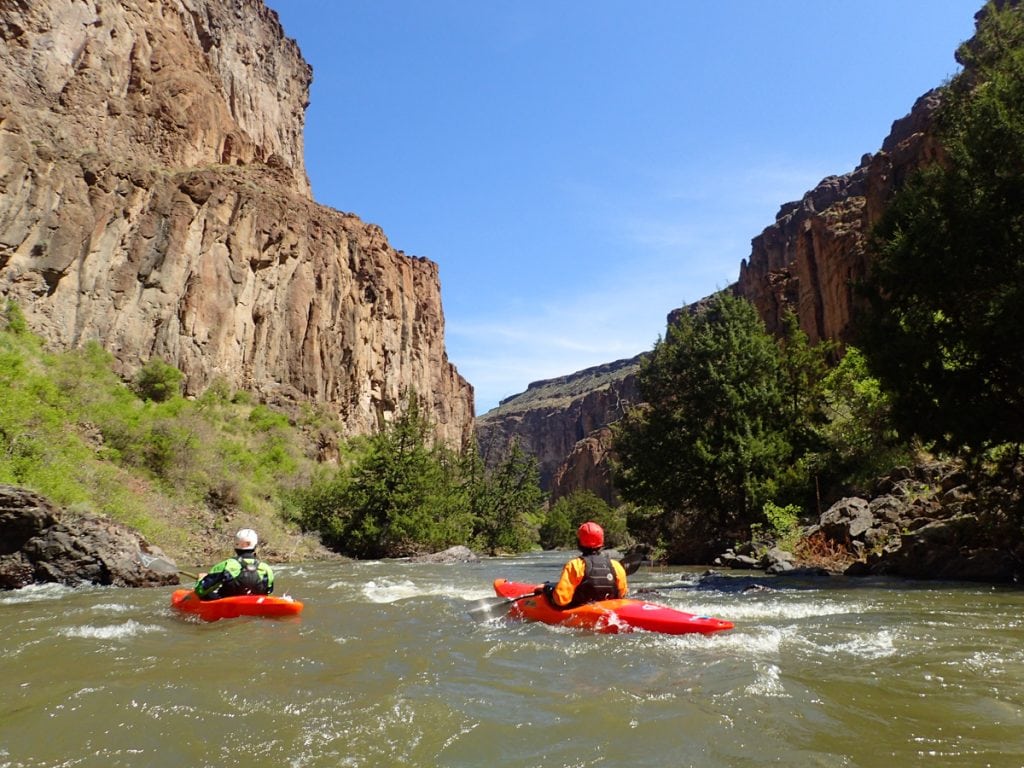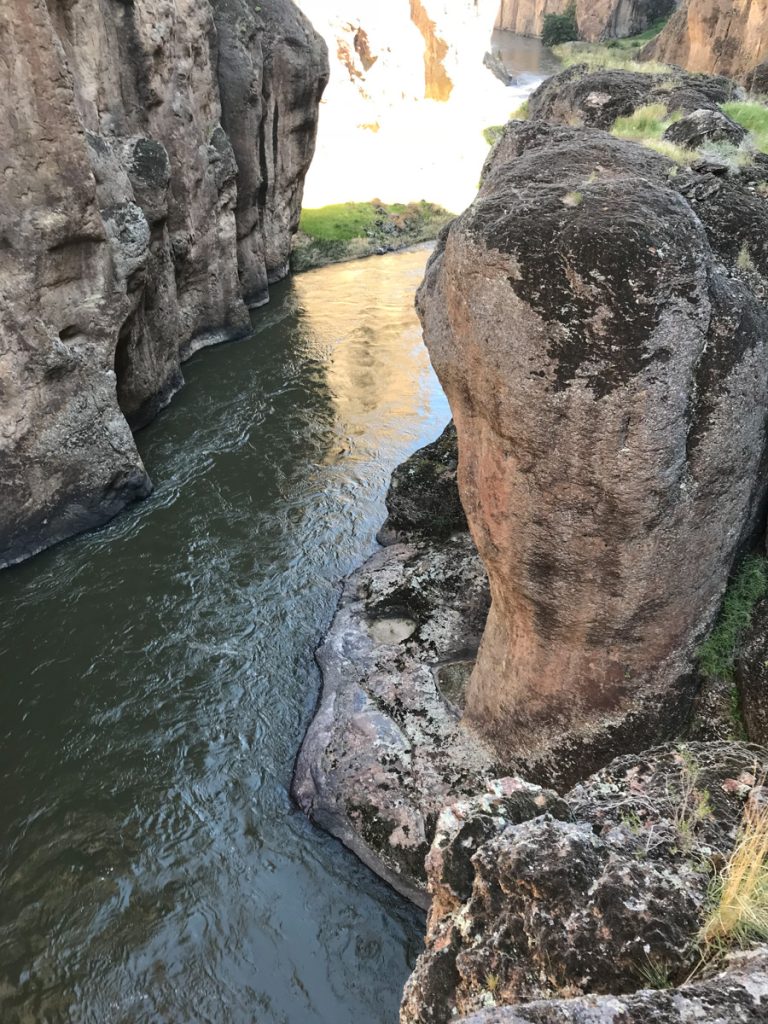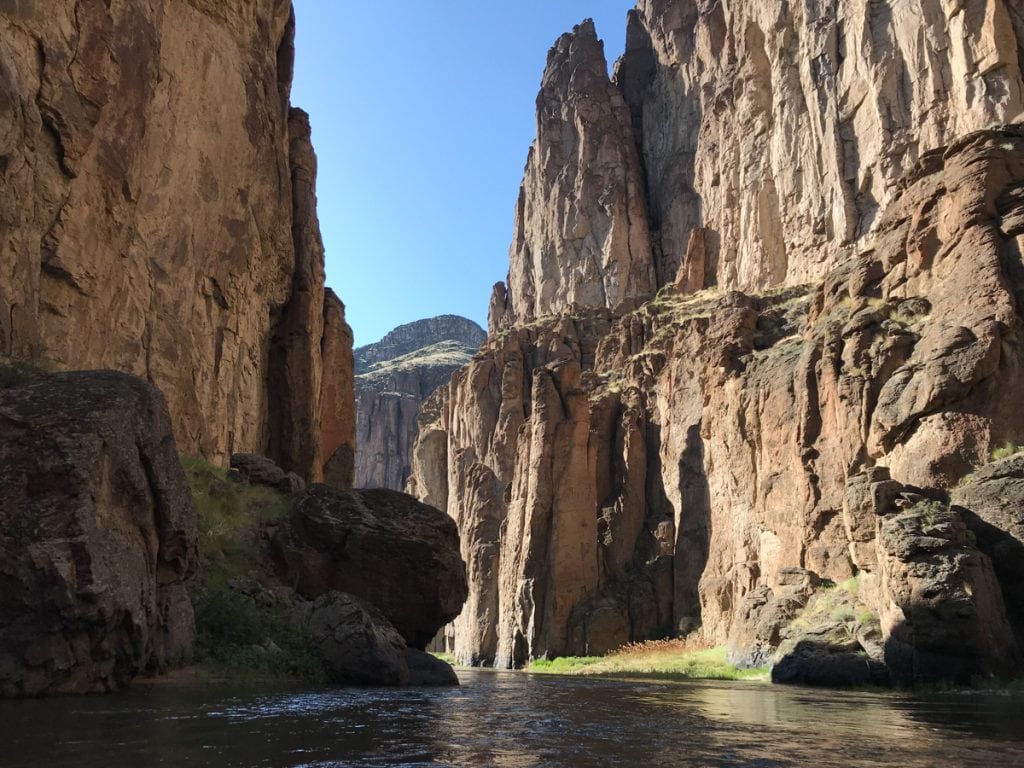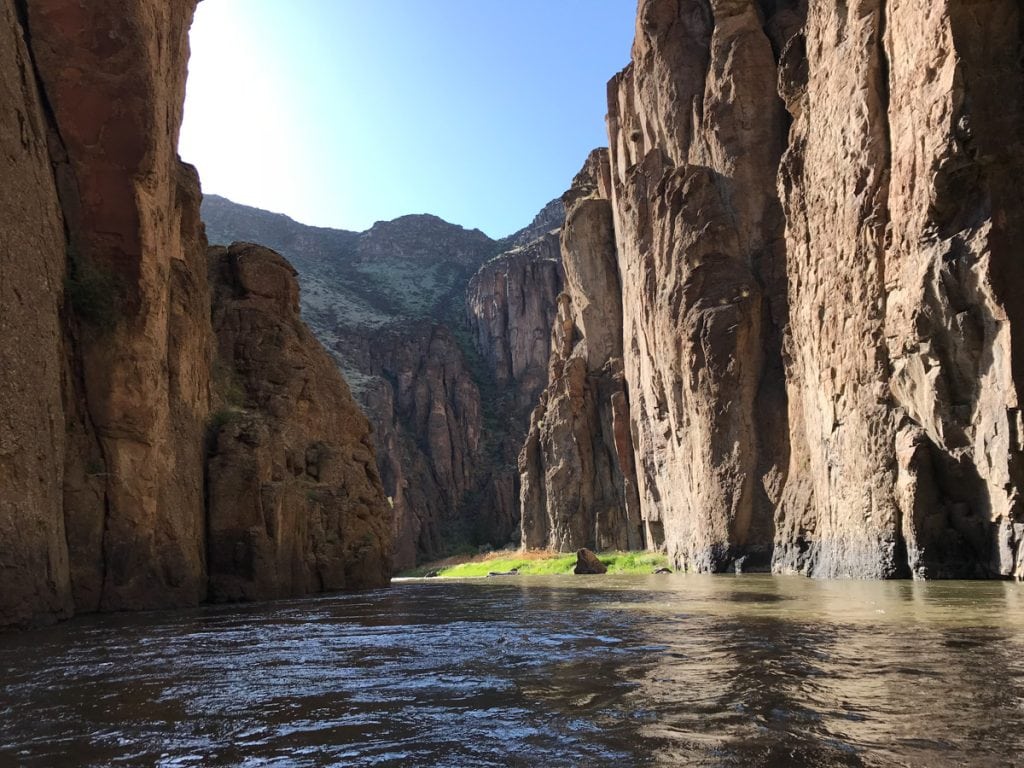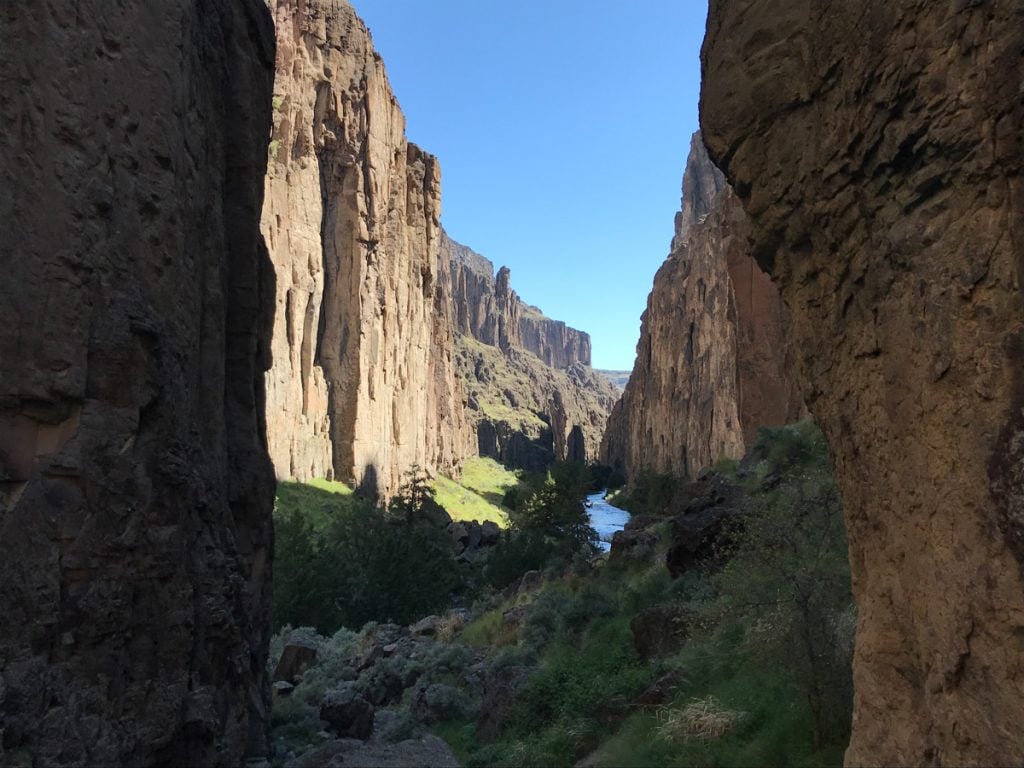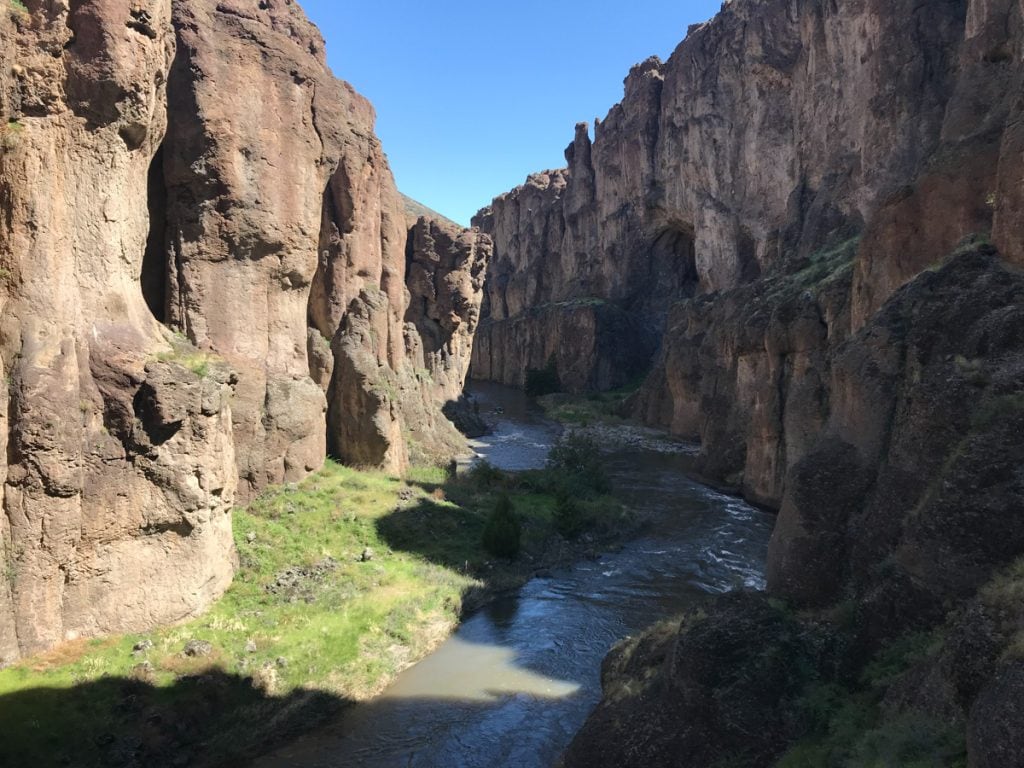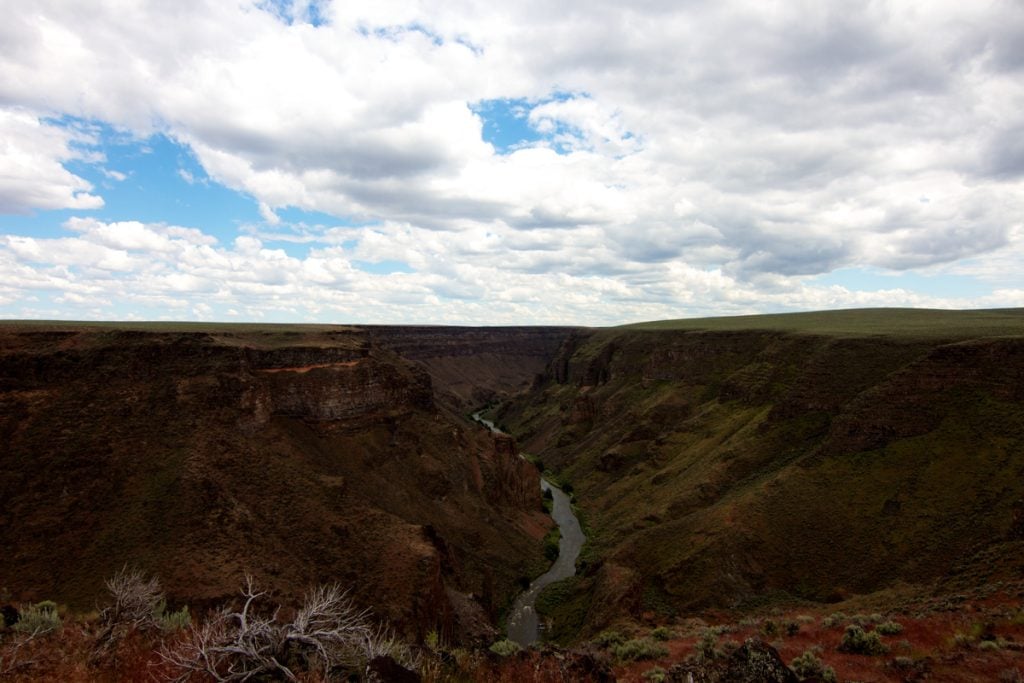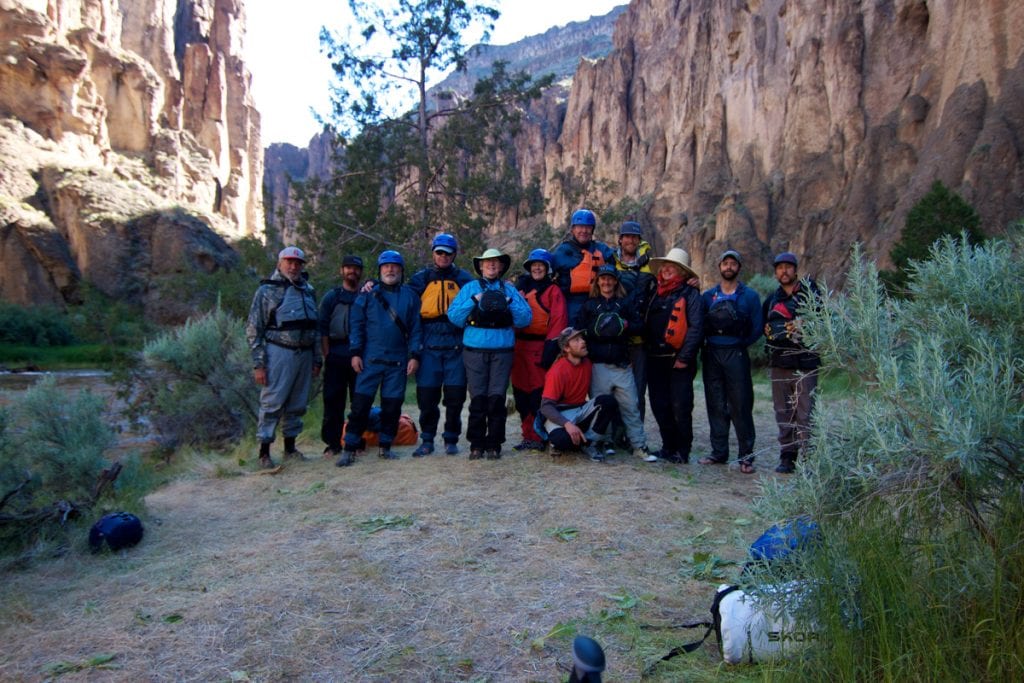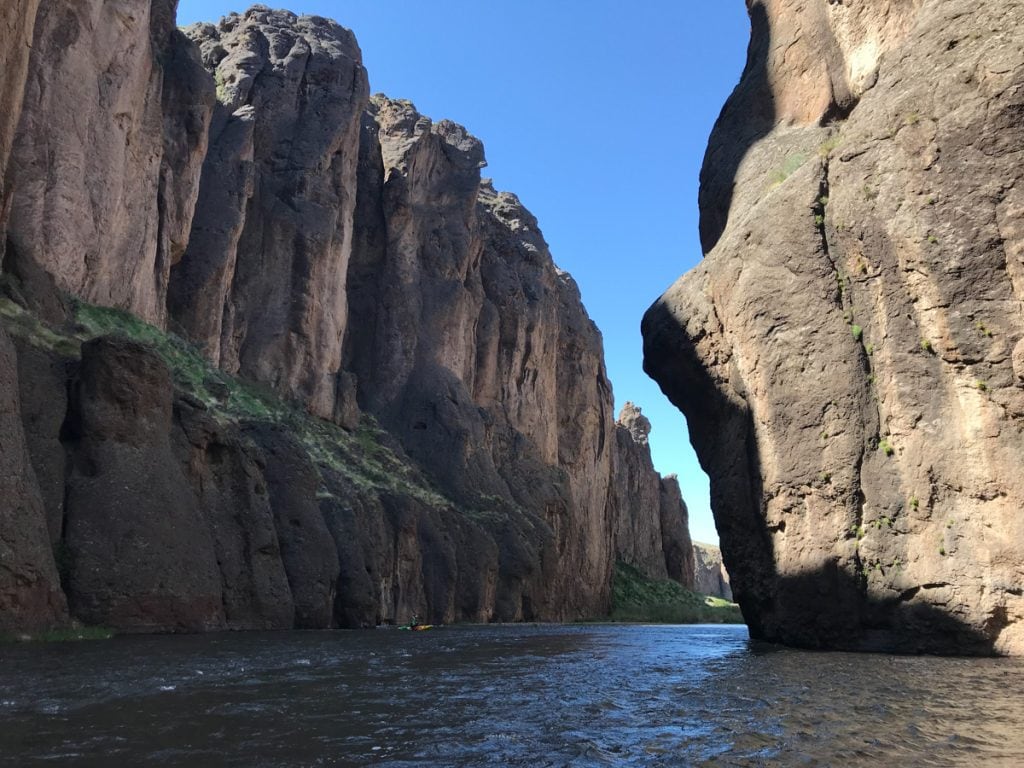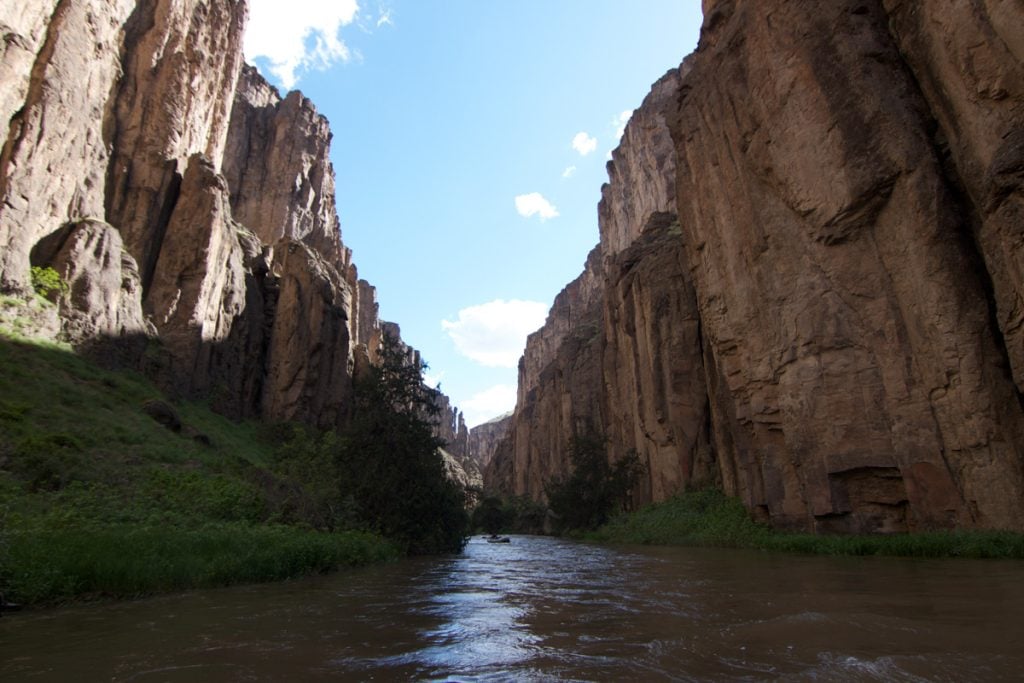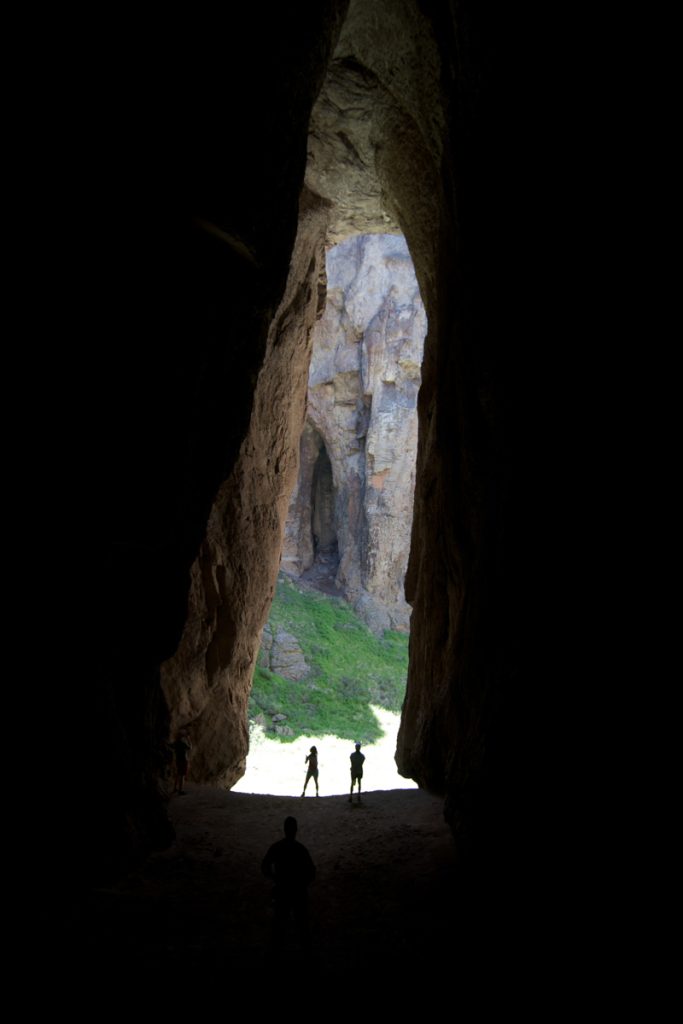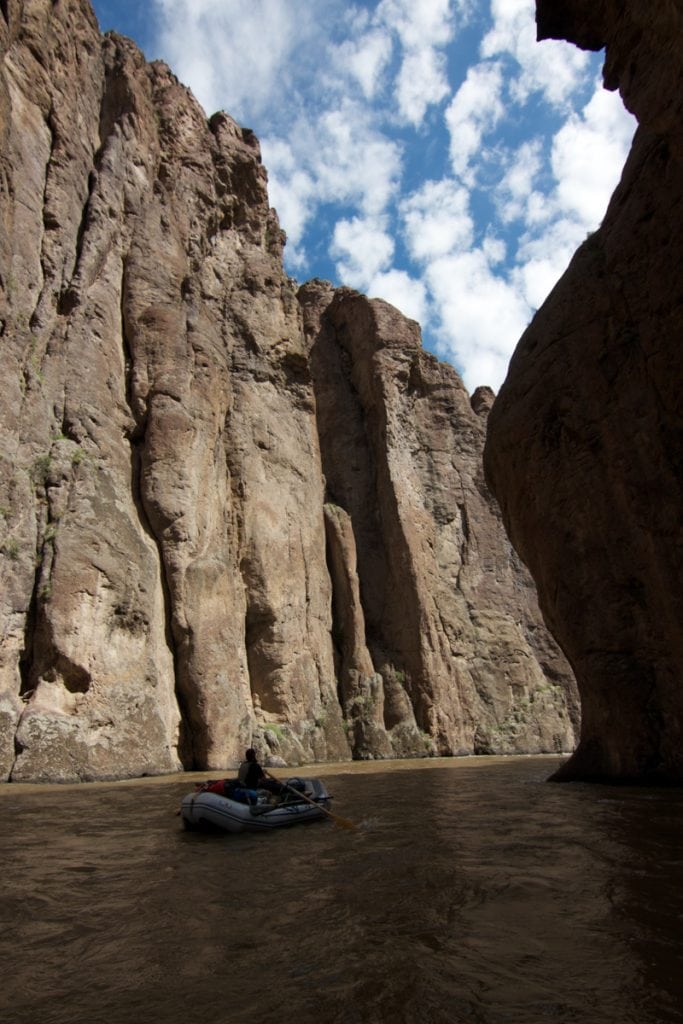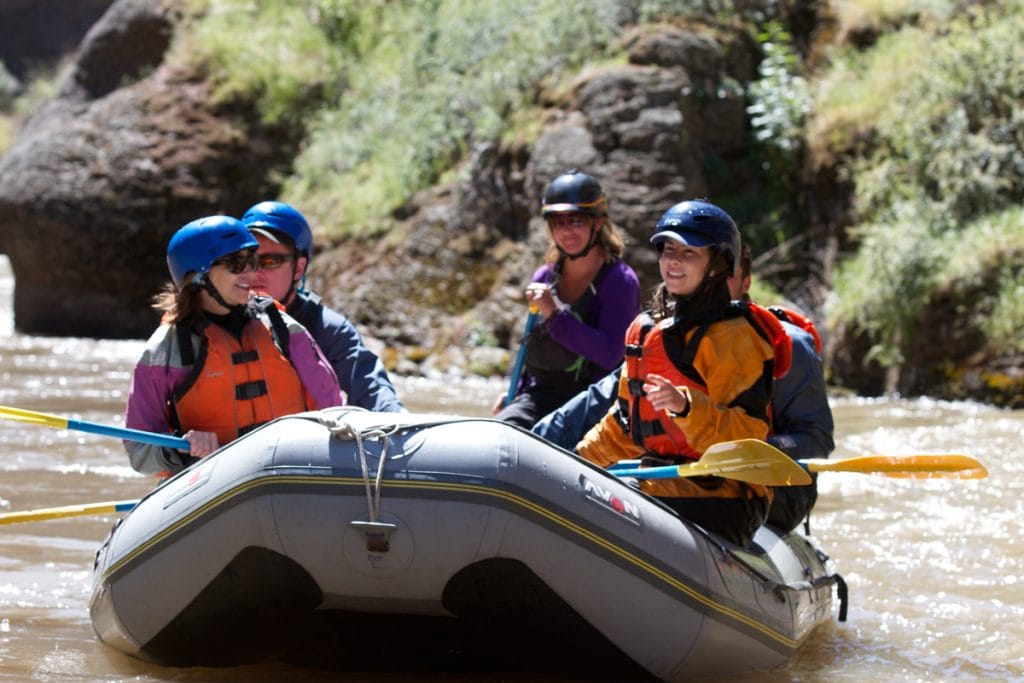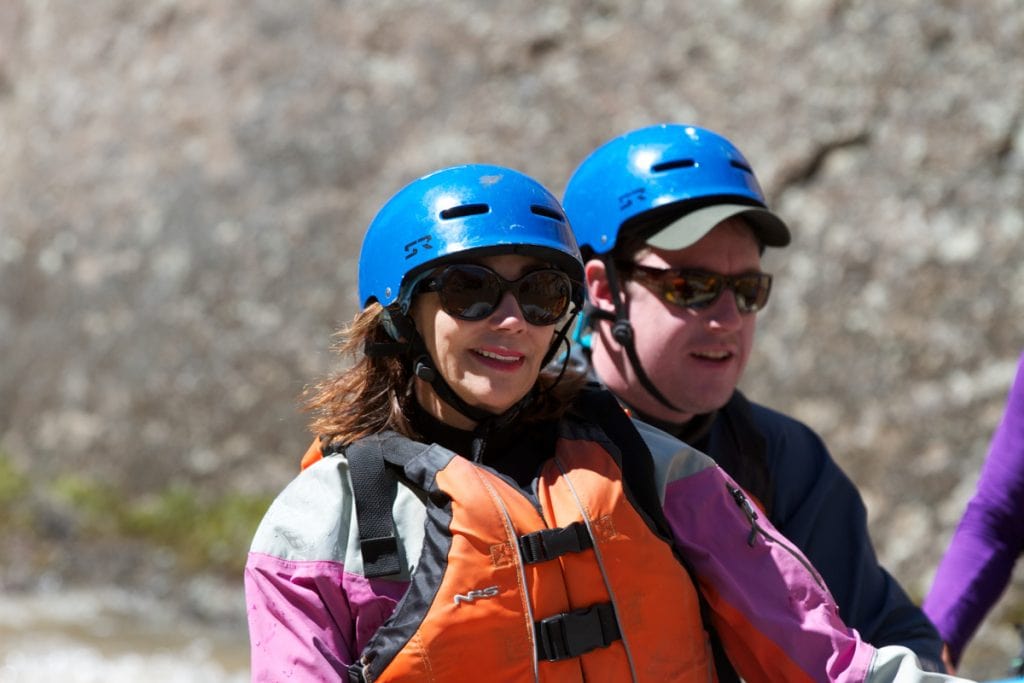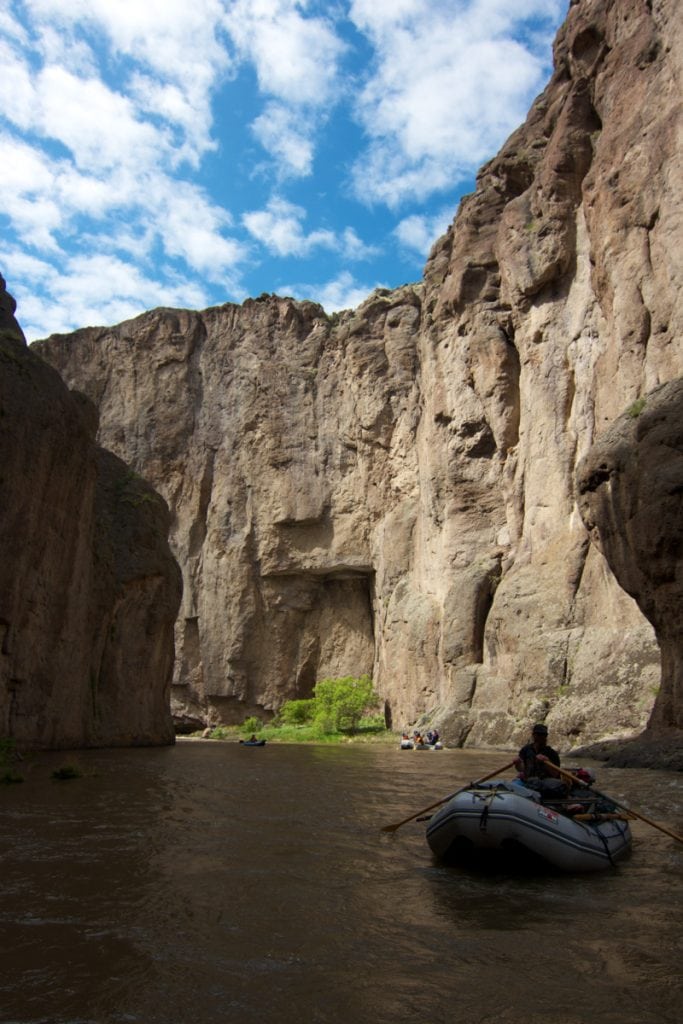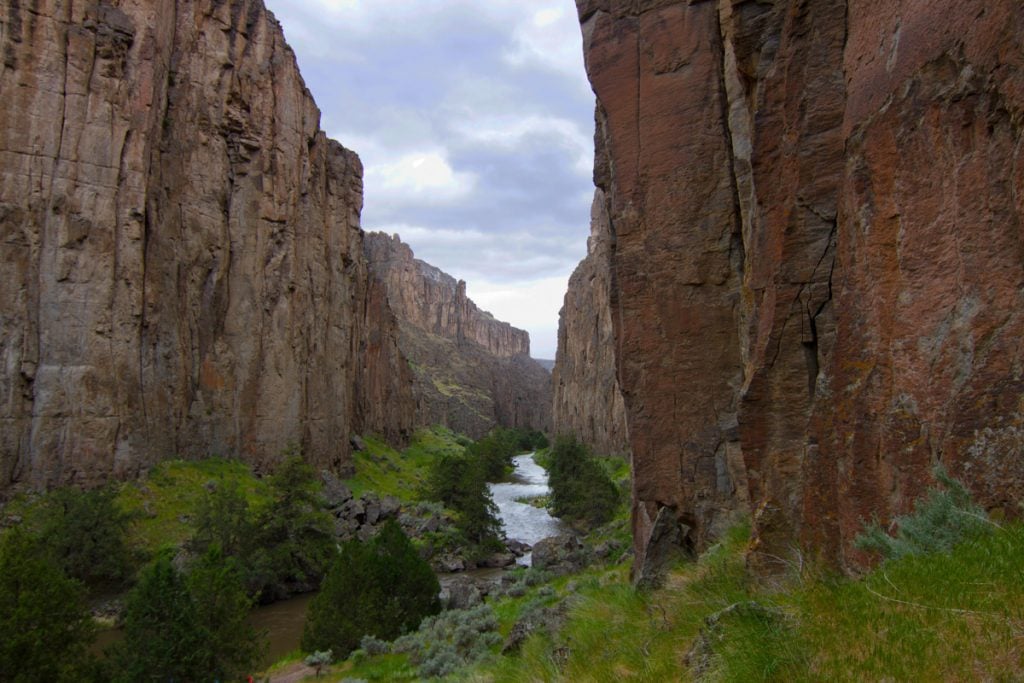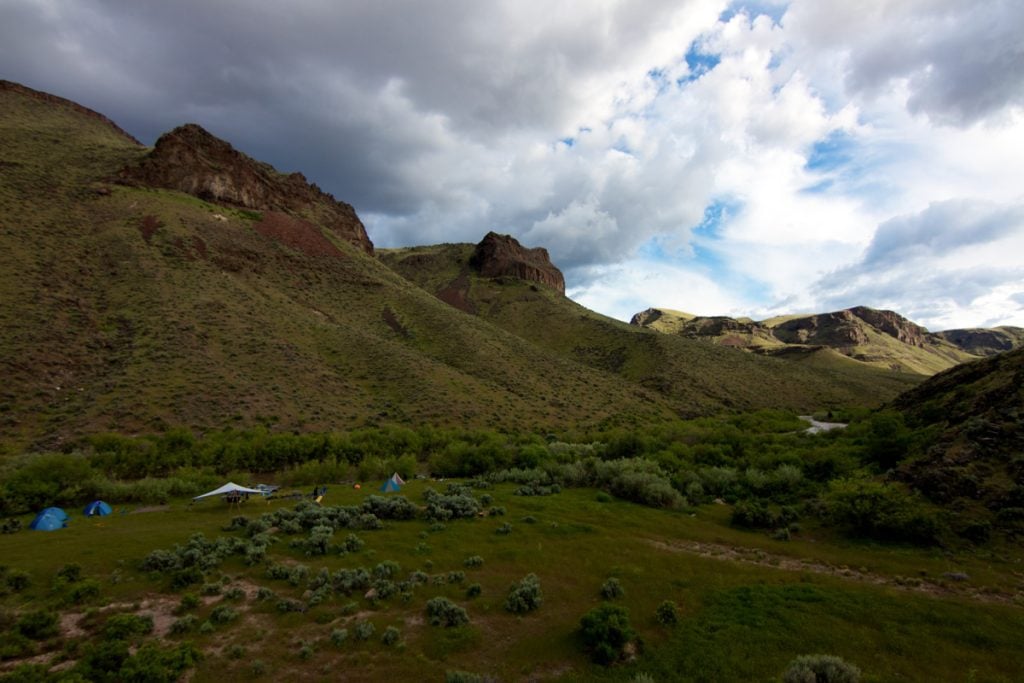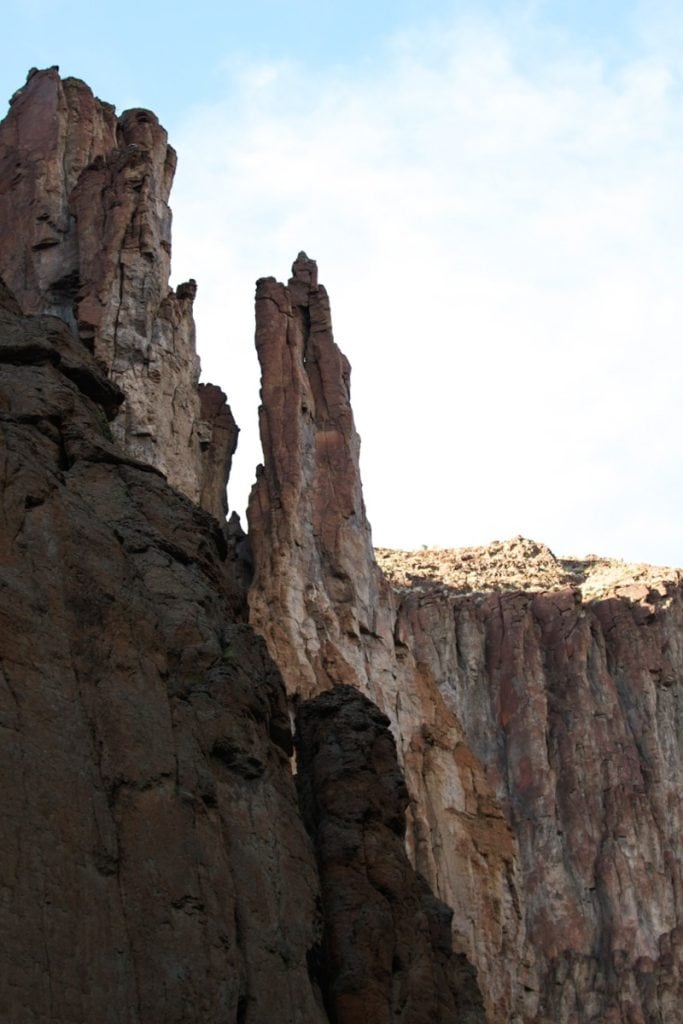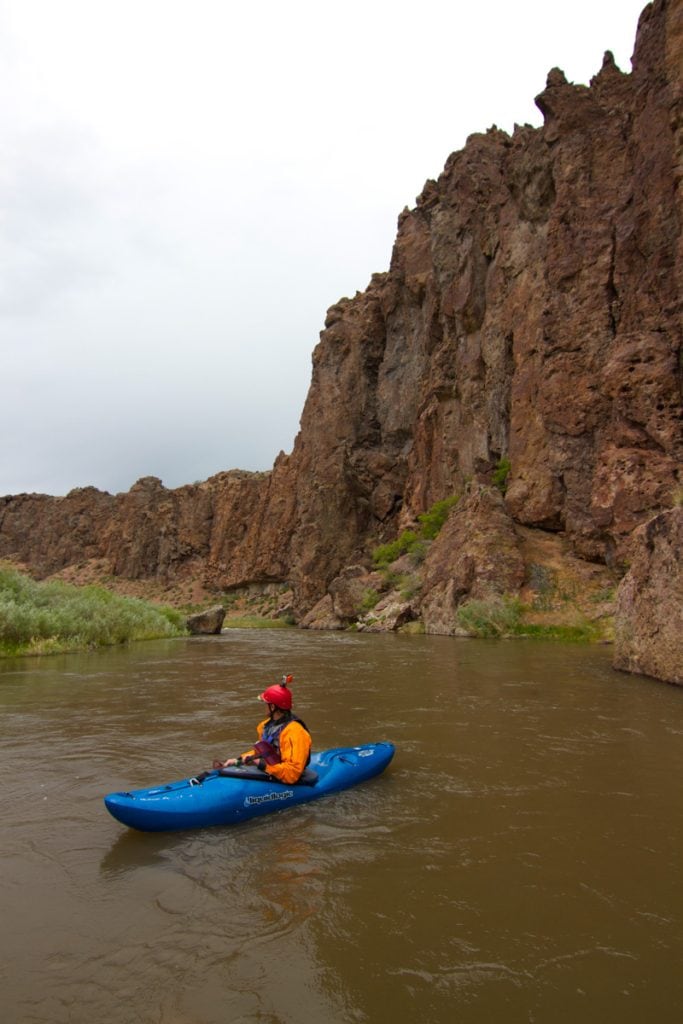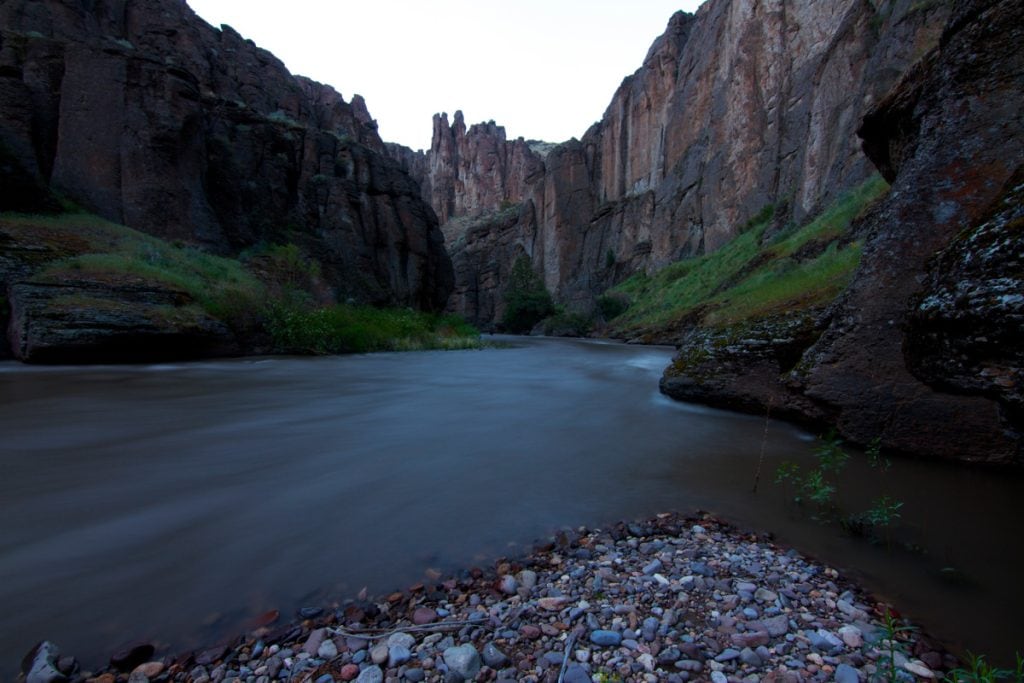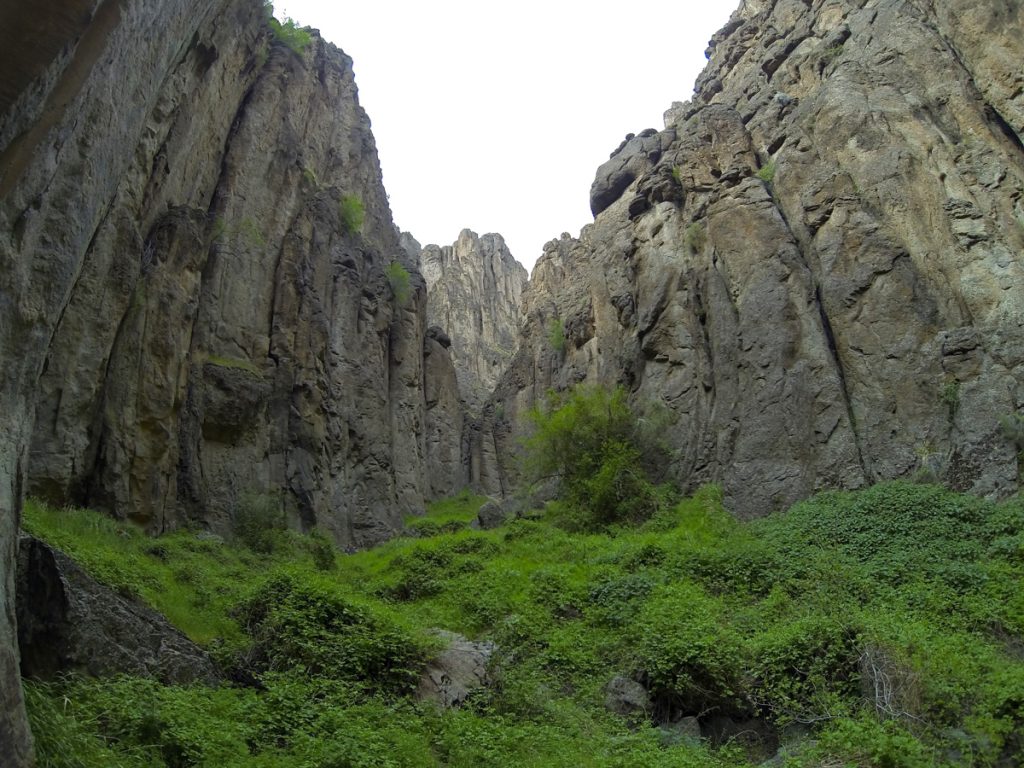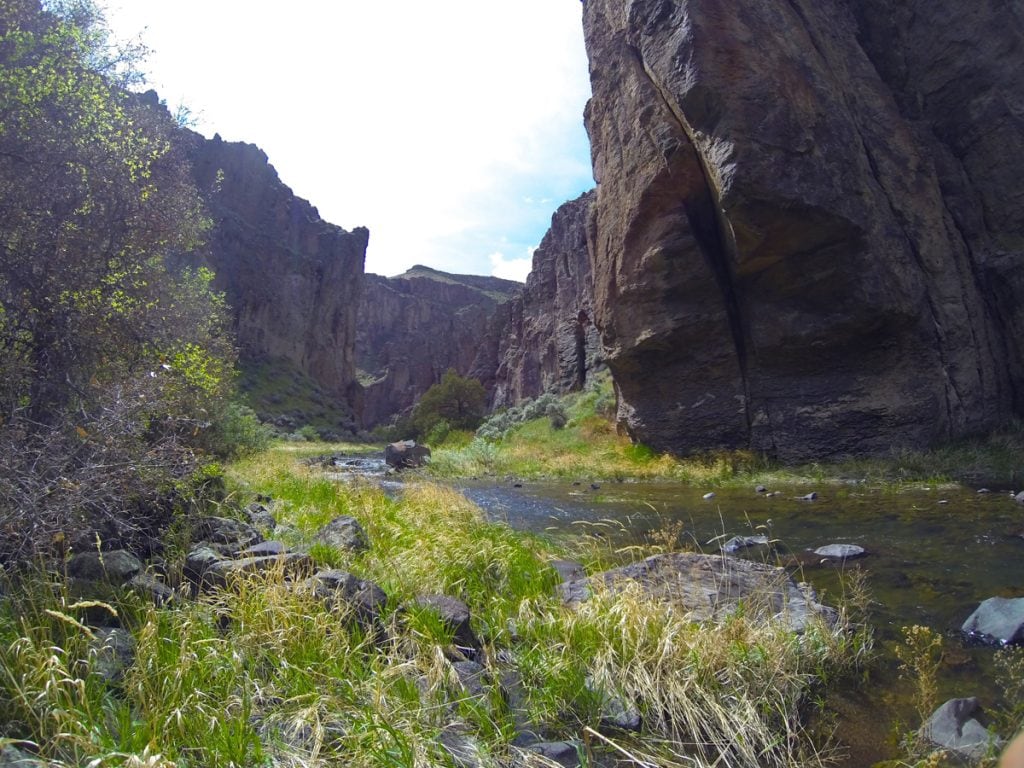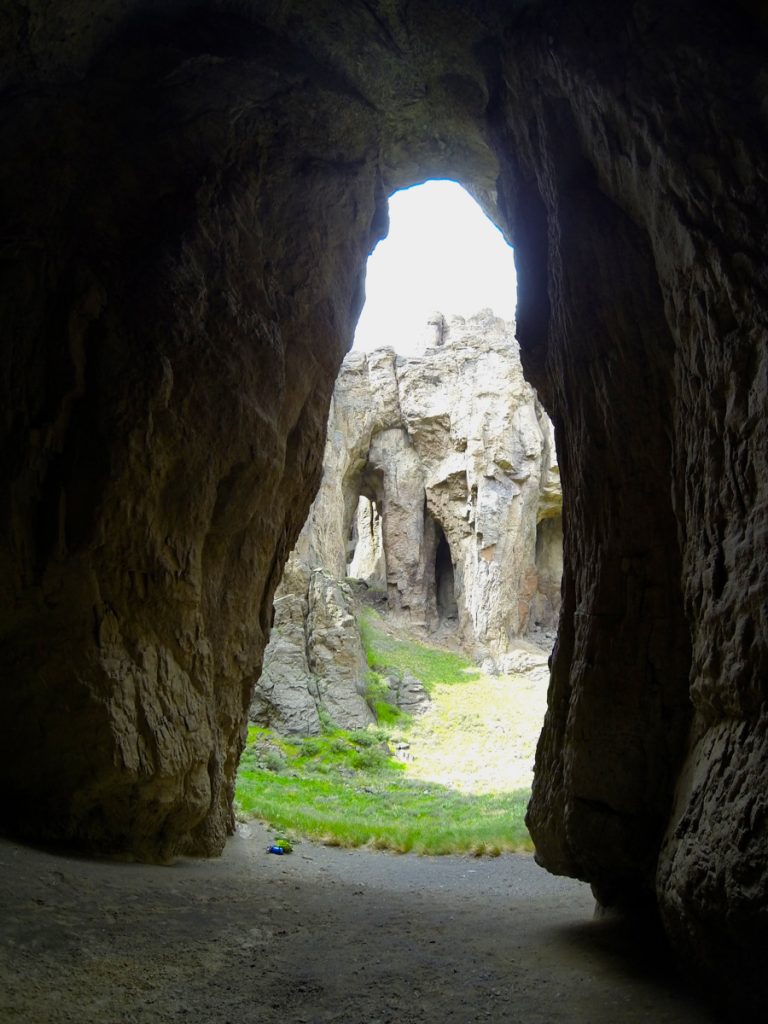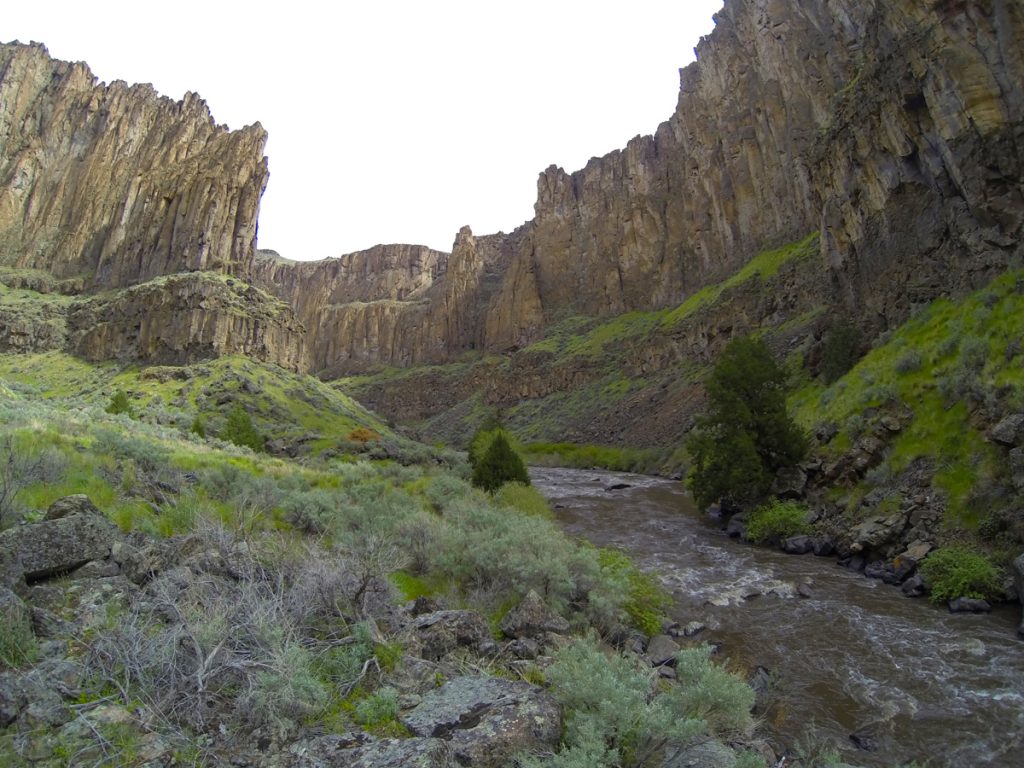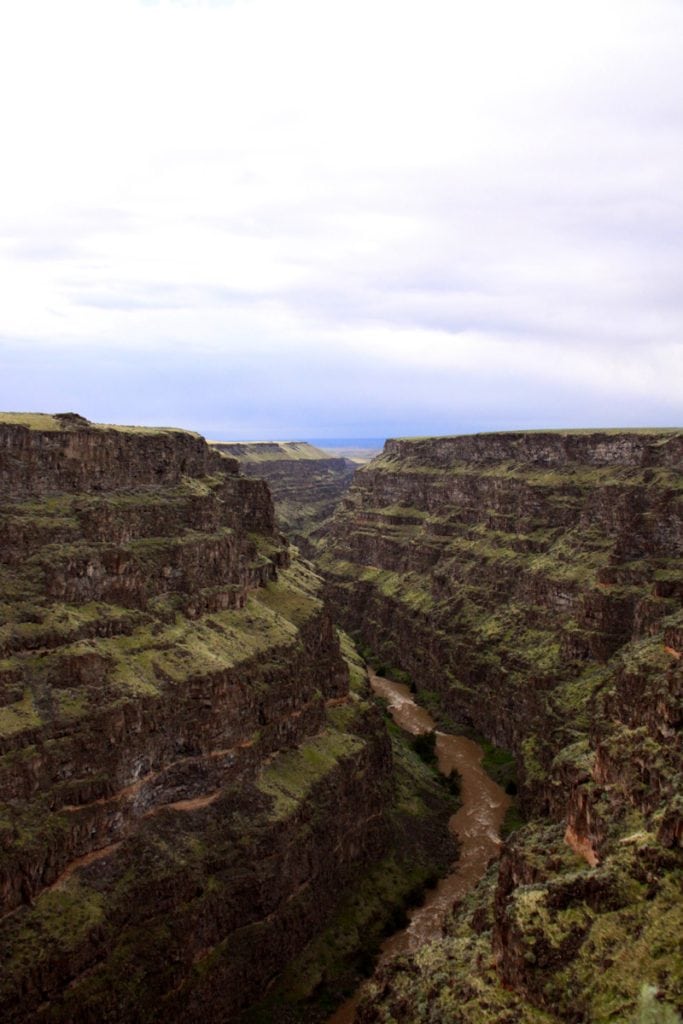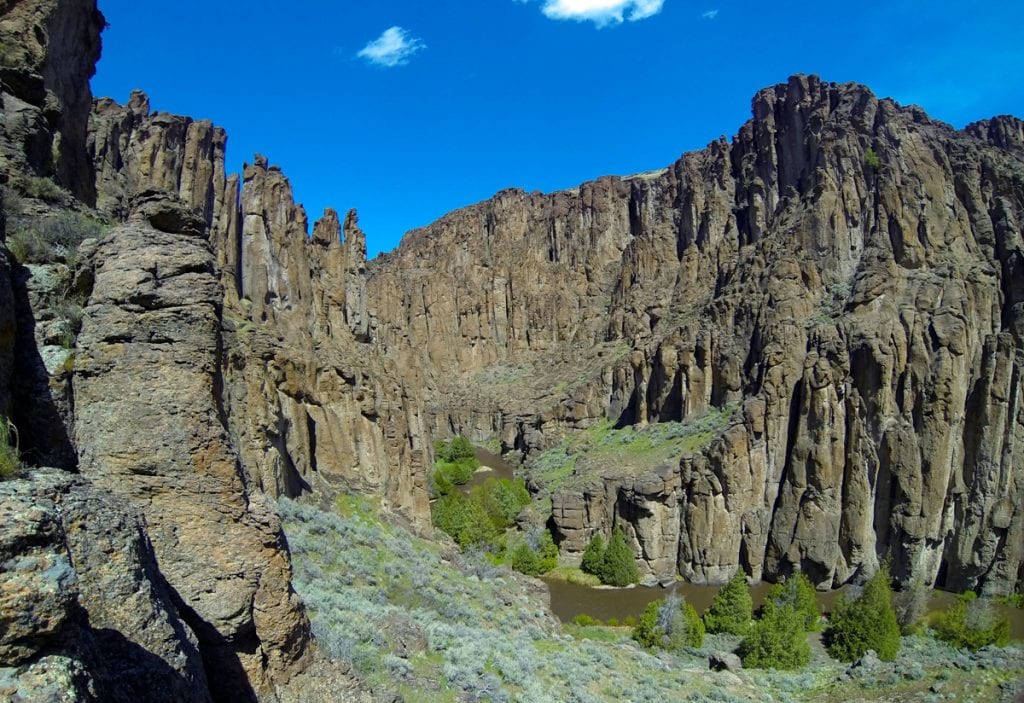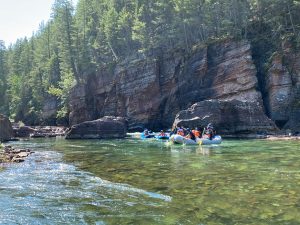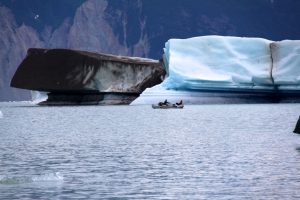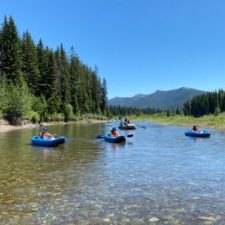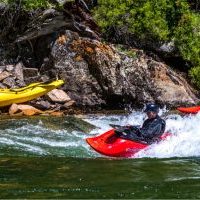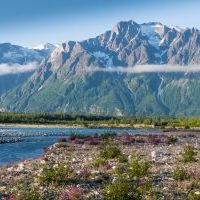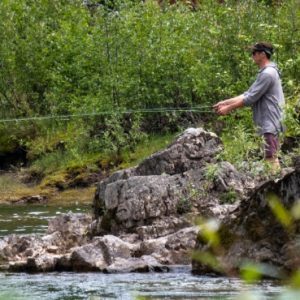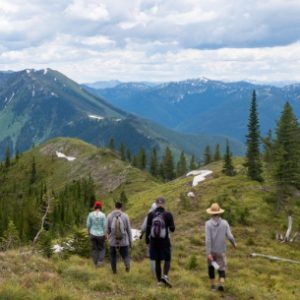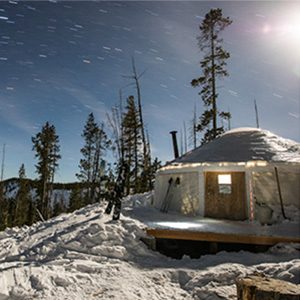Overview
Idaho has secrets. The Jarbidge-Bruneau river is one of the best kept. This slice of desert paradise is known for its technical whitewater and stunning, unique scenery. Often compared to desert landscapes such as Zion National Park, a “mini” Grand Canyon, and even reminders of the Lord of the Rings sets, some of the best of Idaho’s diverse geography is experienced with this river trip. This river requires small boats for tight, technical maneuvering, which allows for intimate group sizes, while also often getting the canyon all to ourselves. Rock spires, brilliant colors and some big fun on the water draw those looking for both a pristine wilderness setting and high adventure.
Trip Highlights
- 4-6 Days, 40-70 miles
- Wild whitewater
- Towering canyon walls
- Stunning vistas
- Intimate group sizes
- Hot springs
- Birds of prey
- Desert wildlife
- Remote
The Jarbidge originates on the remote border of Idaho and Nevada at the base of the Jarbidge Mountains. Spring run-off sends this creek-size river into a frenzy of fast corners and big, technical whitewater. Surrounded by steep canyon walls and juniper forests, it tumbles about 50 ft. per mile, creating one of the best whitewater runs in Idaho. Several sections are continuous class III – IV rapids with at least one portage. The rafting season here is strictly in May as we need the higher water to navigate the rafts. Given the extremely remote location and technical whitewater, we usually have the canyon all to ourselves. This is a bucket-list river trip for the whitewater enthusiast! We use 12′ oar boats with one guide and one guest to navigate the challenging whitewater. You won’t find a guide to guest ratio like this anywhere else, and the trip is limited to 6 guests.
The beautiful high desert plateau comes alive in early spring with delicate desert wildflowers and a wide array of whistling songbirds, birds of prey, bighorn sheep, mountain lions, baby goslings and coyote. There are great hiking and exploring opportunities along the way. Visit a natural arch, hike up to the canyon rim for a breathtaking vista, or lie down by the water’s edge and watch the falcons and swifts fly overhead. As we pass the confluence of the West Fork of the Bruneau, we enter the narrow, red-walled gorge. Stunning side canyons provide perfect afternoon outings and each evening we will enjoy delicious dutch oven dinners around a campfire and relive the day’s adventures! Five Mile Rapid series is the grand finale of the trip, and often a fan-favorite.
The Stats
| Departure Month | May |
| State / Region | Oregon & Southwest Idaho |
| Adventure Level | High |
| Price Range | $2000 - $3000 |
| Activities | Whitewater Rafting, Hot Springs, Hiking, Wildlife |
Logistics
This trip is relatively simple logistically for your travel plans as it begins and ends in Boise, Idaho (BOI).
Before the trip:
Travel to Boise, Idaho (BOI) no later than 5:30 pm one day prior to your trip’s launch date, with lodging arranged for this first night. We recommend staying at the Best Western (Vista) Inn for logistic simplicity. The hotel has a free airport shuttle or parking available to leave your car if you plan on driving to Boise.
Plan on meeting for orientation at 6 pm the night before the launch at the Best Western Inn (Vista at the Airport) (1-800-727-5006). Here you will meet your trip leader, other guests that will be on your trip, and we will hand out dry bags, discuss the trip details and answer any last minute questions.
The next morning we will depart the Best Western Inn and drive as a group to the river put-in at Jarbidge Forks (Jarbidge-Bruneau combo), about a 3 hour trip, or to Murphy Hotsprings (Bruneau-only). If doing the Bruneau-only adventure, your adventure will start on your drive in. Though Boise to Bruneau, ID is only about an hour trip, the road down from Hot Springs Road to the put-in is an extreme 4×4 drive, and though only a short milage to get to the river, we take it very cautiously. This drive getting down will most likely take an additional 1-2 hours. This road becomes unnavigable if it rains, so poor weather may cause trip plans to be amended.
After the Trip:
We provide transportation to Boise from the Bruneau River take out. It is about a 1 hour drive and we usually arrive by late afternoon. Some people arrange flights for late that evening, or spend the night in Boise.
Sample Itinerary
Day before the trip: Arrive in Boise, Idaho no later than 5:30 pm with lodging arranged for this first night. Plan on meeting for orientation at 6 pm the night before the launch at the Best Western Vista Inn. Here you will meet your trip leader, other guests that will be on your trip, and we will hand out dry bags, discuss the trip details and answer any last minute questions.
Day 1: We’ll get an early start for our drive to the river. We typically try to leave around 8 am. After a 2-3 hour drive, we will arrive at the river put-in, where you will meet the rest of the guides with the boats. We will have lunch, gear up, fit lifejackets, and have a river safety talk before getting on the river. When we push off, we’ll immediately be in the midst of swift rapids. This is an exciting day!
Day 2: More good rapids and some excellent hiking available. The larger rapids are generally narrow chutes between large boulders.
Day 3: In the morning we reach Jarbidge Falls, which we may have to line or portage depending on water levels. We’ll reach the confluence with the Bruneau around lunchtime and soak in the natural hot springs. Those rafting only the Bruneau will join the trip here.
Day 4-5: We are on the Bruneau now, floating through some of the prettiest canyons in the west. There will be some good class III rapids and lots of opportunities for hiking.
Day 6: Run Five-Mile Rapid in the morning, 3.5 miles of great class III-IV whitewater. We’ll eat lunch along the river and have a mellow float to our takeout around mid-afternoon. Drive back to Boise.
Bruneau Only: Arrive in Boise the day before the trip and drive to the river the next morning. Soak in the hot springs, eat lunch, and then put on the river. Days 2-4 are the same as days 4-6 of the Jarbidge-Bruneau trip.
FAQs
Camp Life and Meals
Yes, we do normally change campsites every day. This allows us to cover new scenery, rapids, and side adventures each day at a fun, comfortable pace.
On the River
Clothing, Footwear, and Gear
Logistics
Miscellaneous
Book Now
